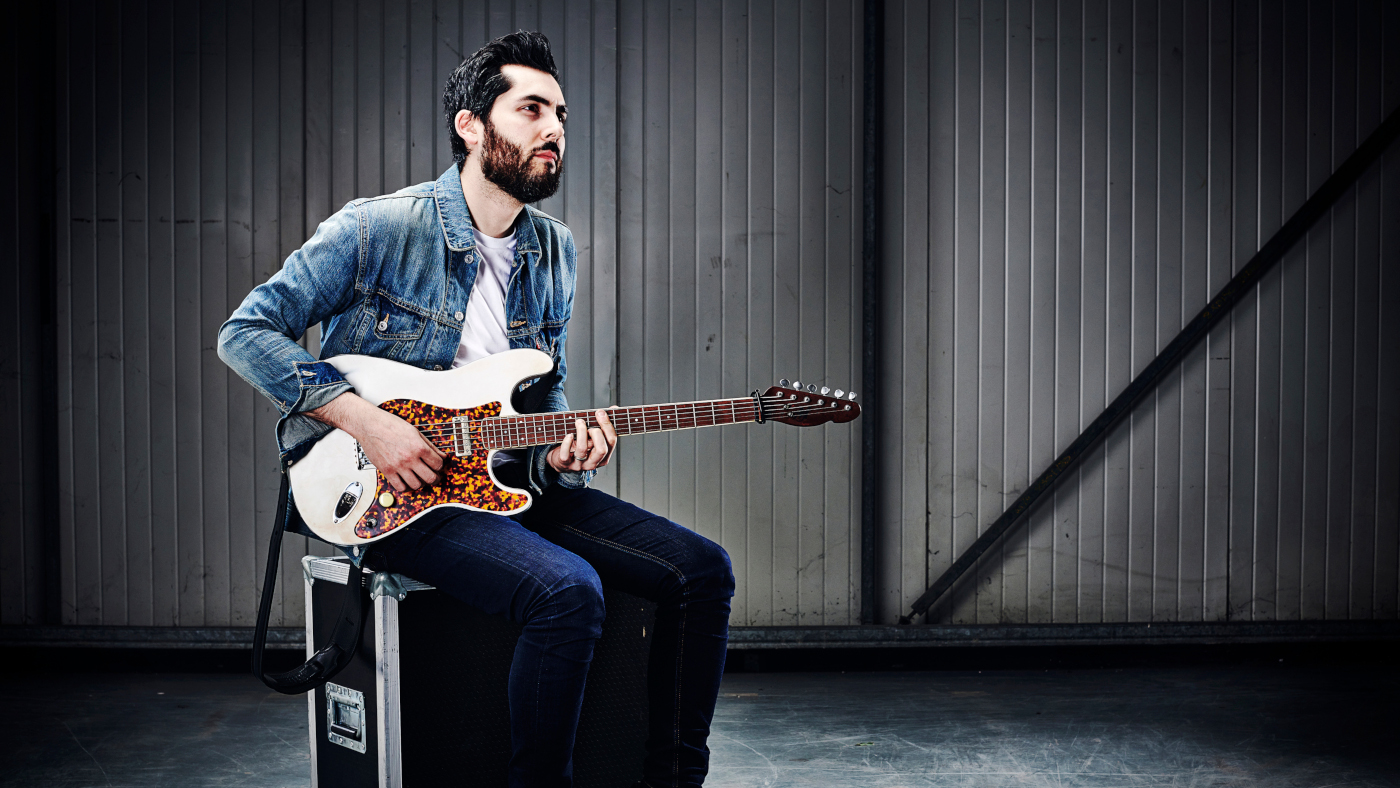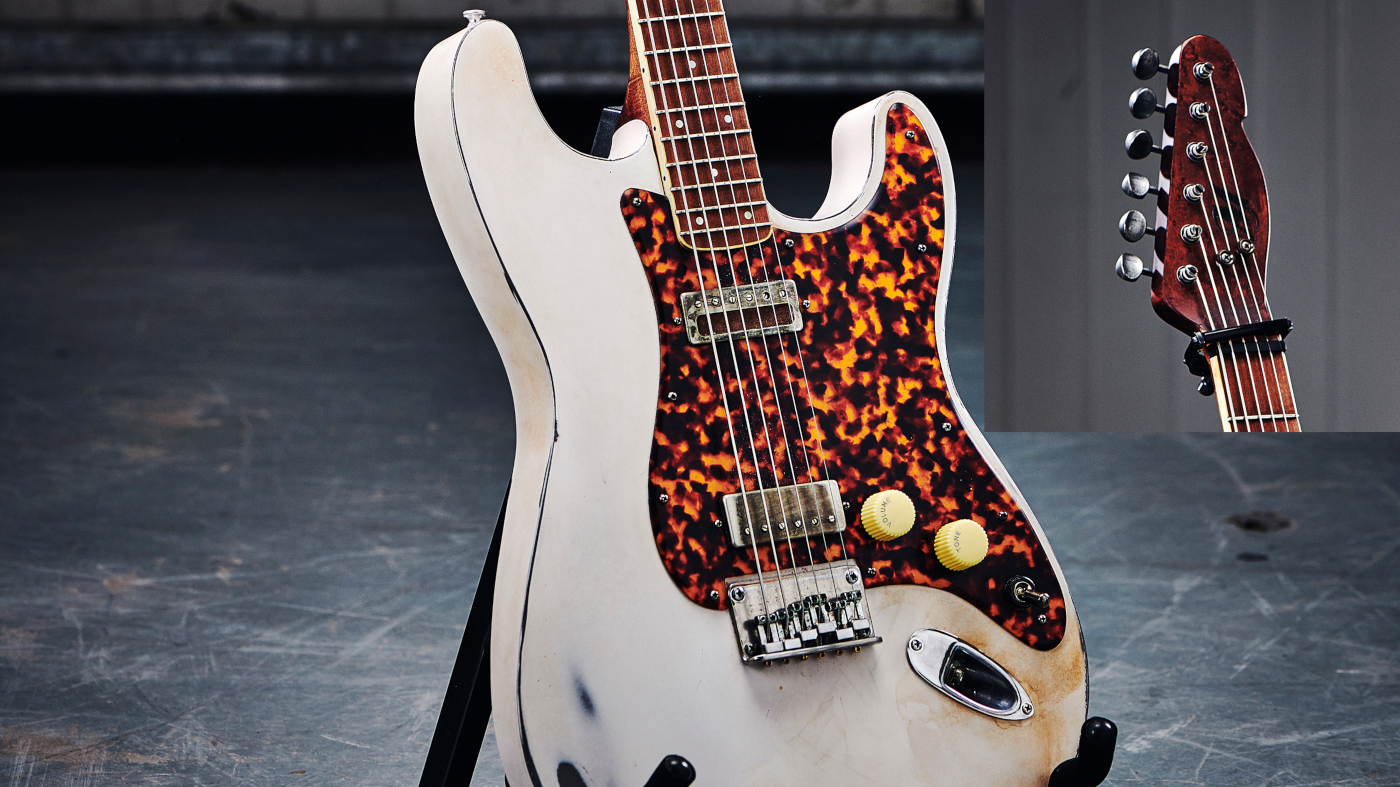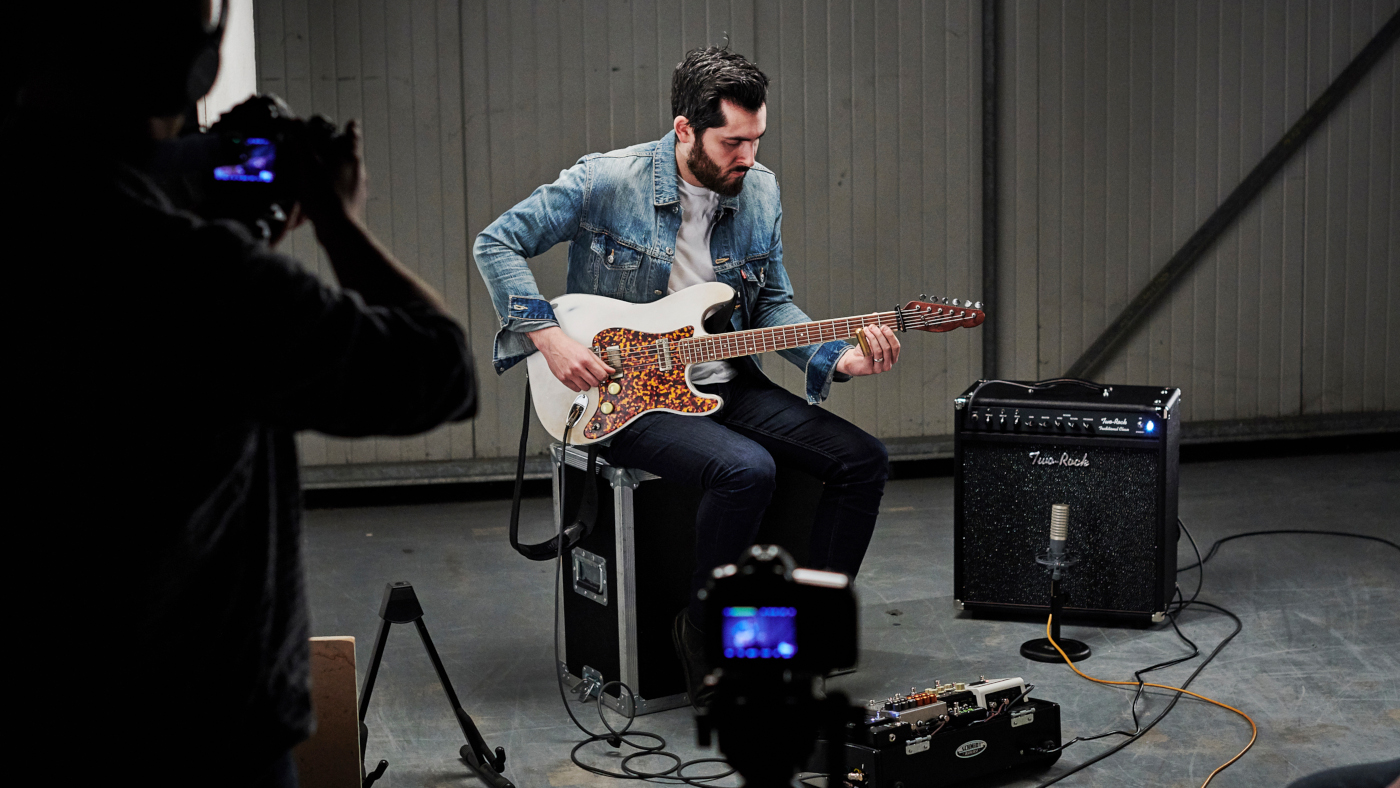Ariel Posen: “I play hard, I dig in a lot. I like the fight”
We talk gear, tunings and techniques with the Canadian guitarist

With his long-awaited debut album, How Long, now out in the wild, the Canadian songwriter joins us, sharing the tricks of his well-stocked pedalboard and his go-to guitar tunings.
Most of the songs on Ariel’s new album have been written for over a year. When the guitarist was over in the UK last spring, many of them had already featured in his live set and it was a spur of the moment phone call while Ariel was in London that finally set the wheels moving for getting them recorded.
One of the heroes of the record was actually my Fender Eric Johnson Strat, which is tuned to open C
“I made the decision to call my friend Murray Pulver, who I co-wrote a few songs with,” he tells us. “I said, ‘Listen, man, if we don’t do this, I’m possibly never going to do it. Let’s do this record. Do you want to produce it? I’m going to book out some studio time.’”
Ariel had around 10 or 11 songs ready to go, but strenuous self-editing in the studio whittled the tracks down to seven, plus some extra instrumental interludes. “I’m glad I did it that way, because it’s not that these songs had never been played or that they were never workshopped in any way. They’d been seeing some miles, so I had a good idea of how I wanted them to sound,” he tells us. “Then, of course, we did preproduction with the guys right before we went into the studio - just to iron out the kinks and make sure the arrangements were solid.”
The result, How Long, is a remarkable album with some solid guitar playing and masterful songwriting throughout. And because the guitar tone is so darned good, we were eager to explore the gear that Ariel used in its production...

Ariel Posen: “People started to take notice once we finally started just playing like ourselves”
“You know what? With this whole project and the way I’ve always rolled, everything has to be sincere and honest. I don’t believe in using something out of the ordinary or amazing just because it’s amazing. If it’s something that doesn’t represent what I do, then there’s no point. So it was fairly simple.
“In terms of amps, I had my Two-Rock Traditional Clean. I used my Benson Chimera amp on a few songs, and I had a ’68 Super Reverb. That is the amp that’s used on the interludes, called Hollow Hour, She Knows and Daybreak. On Get You Back we used this small old Kay combo amp that I don’t know the model of, but it had a lot of character and mojo to it.
Want all the hottest music and gear news, reviews, deals, features and more, direct to your inbox? Sign up here.
“In terms of guitars, I used my Suhr Classic S - a Classic Antique S - on the song Try. I used my Collings SoCo Deluxe and 360LTMalot,too.IalsousedmyJosh Williams Mockingbird, which is a fantastic 335-style guitar. One of the heroes of the record was actually my Fender Eric Johnson Strat, which is tuned to open C - that one was used a lot on the record.”

Frank the Tank
What about acoustics?
“There were a couple of acoustics at the studio, a Morgan CM, which is Concert Mahogany, on a bunch of the songs, and we had a high-strung. I think it was just some crappy old acoustic that was Murray’s, which is high-strung, or some people call it ‘Nashville tuning’, which works great to double acoustic tracks with. It just makes it pop, kind of gives it that Tom Petty sound, you know? Like a 12-string, but it’s not a 12-string, but technically it is.”
Another staple of your recorded sound is a Victoria Reverberato...
We did spend a lot of time on guitars. It’s not a guitar record - as you’ve probably noticed - but we spent a lot of time on the sounds, the parts
“Yes. Most people now know that I call it ‘Frank’, as in ‘Frank The Tank’... if you’ve seen the movie Old School. That was the main tremolo that’s heard on the record, and we also use this plate reverb at the studios. The songs like the interludes, and Get You Back, and a lot of solos on each of the songs, we mixed in this plate reverb, which just gives it this huge wash. It’s pretty magical.
“In terms of pedals, I used my ’board that I was here with last year. It has a Beetronics Octahive and Jesse Davey King Tone Silicon Fuzz. I used The Duellist primarily, by Jesse Davey, for overdrive. I used my signature Ariel Posen model by Mythos Pedals, the Daedalus Plus, for a few songs. I didn’t use that much compression. The only song that I used compression was on Fade, and for that I used the Fat General by ThorpyFX, which is another amazing compressor.
“A Hudson Broadcast was used immensely and the Strymon El Capistan for delays - for a long and a slap. I also used the Walrus [Audio] Fathom for some of those reverbs, kind of like how I’m using the TC [Electronic] Hall Of Fame 2 now. I had a Walrus Monument pedal, which is harmonic tremolo, as a backup, just in case, but we used Frank for all the tremolo. That was about it - fairly simple setup, nothing too crazy.”
The guitar sound that you achieved on the album is amazing...
“We did spend a lot of time on guitars. It’s not a guitar record, as well - as you’ve probably noticed - but we spent a lot of time on the sounds, the parts. When less is more, we made sure there was very little. When there was an opportunity for, maybe, more being more, we went deeper. It was fun getting that deep into it.
“It’s funny because I’m used to doing sessions for people, playing guitar. You don’t even think twice about what you’re supposed to be doing or what the parts should be. When it was my own project, I had to second-guess everything. It was like, ‘Geez, I don’t know what to do. Is this the right thing? Is this the right move?’ Thank God I hired a producer. Always have a producer so they can overlook it and go, ‘No, that’s okay. Let’s do it. You’re doing the right thing,’ or, ‘That’s good, but let’s just change that a bit.’”

Bari-tone
Tell us about the new baritone guitar...
“I’ve spent some time doing low-tuned open C, open D tunings, which I’m fond of and still use - and use a lot on the record - but there was a song called Get You Back, [on] which I used a Teisco Del Rey that I bought on tour in Goshen, Indiana, years ago for $50. It’s a very short-scale-length guitar and I put baritone strings on it - I think whatever I had kicking around. I may have had some 16 to 64-type gauge of strings, put them on, tuned it to B standard, which is B, E, A, D, F#, B.
I’m just getting so used to the baritone that it’s hard to go back [to a guitar with regular tuning] now
“It suited the song extremely well. It gave it this character that I had never really had in my sound. It has one gold foil pickup in it, super microphonic, so when I was tracking it, the feedback would ring back to the studio monitors and it would ring back to the guitar - it was all this interplay with the guitar itself and it was so cool. It took the pedals really well, and we were running it through this Kay amp, trying to blow it up, essentially. It turned out great in the recording.
“Once I started playing that song live, I said, ‘Well, I need to take that guitar for this song.’ Sure enough, I took it out a couple of times and it is not a live guitar. It’s temperamental, it doesn’t stay in tune that great, and that pickup just does not deal with loud very well live. It was just unusable.
“I decided that I really wanted to make that more of a staple of my sound in my playing, so I contacted my friend Matt Eich at Mule Resophonic Guitars, and said, ‘Basically, I’m a Strat guy. Can you, please, build me a Strat?’ He said, ‘Yes, for sure.’ We made it happen, he built it [pictured left], and I’ve been spending the last half year with it, basically transferring everything that I play onto that guitar now and making it a big part of my sound.”
So, the baritone has now become your main instrument?
“That’s the main guitar I use in my set, along with the Collings or something that’s in open C. I just like the B standard tuning because it just gives you so much more range. What would normally be an open G chord is now a C chord, and my D chord is now a G. It’s more range. I like that. I’m just getting so used to it that it’s hard to go back [to a guitar with regular tuning] now.”

Switched
Are you transposing some of your songs to fit the B tuning?
“I have transposed a couple of them, yes. A song of mine called Try, which is in G in standard tuning, I now play that in C. Of course, Get You Back is in E - at least the main riff is in E - but now it’s in A, that whole song. There’s a little bit of that kind of stuff going on. It’s a lot of math, but I’m just used to that.”
What about your Collings, what tuning do you keep it in?
You get different inflections from both tunings; they both have different qualities
“That’s in open C. The best part about open C for me is that I play a lot of songs in C or G, so rather than being in open E and having to capo-up really high on the neck... Again, with the baritone tuning, it just gives you more range on the lower side of things. If I do want to capo up, I can be in open D easily. I can be in open Eb easily, whereas I can’t do that if I’m in open E. I’ve always switched between open tuning and standard tuning for slide. That doesn’t change. I use both, 50/50.
“The reason is that you get different inflections from both tunings; they both have different qualities. I’m going for the same melodic approach, the same notes every time. It doesn’t inspire different melodic choices, they just come out a little differently in each tuning. They’re like two different voices to me. That’s why I have the open-tuned guitar and a standard-tuned guitar always on tour with me, and for writing I like how certain things sound in open-tuning voicings and how certain other things sound in standard- tuning voicings.”
As you swap between straightforward fretting and slide, how do you set up? Is it a compromise between low and high action?
“I do have a compromise. I don’t know the actual measurement, it’s a feel thing. It has to be high enough that I can slide comfortably; it has to be low enough that I can play without the slide comfortably. But I’ve always liked slightly higher action anyway.
“Most people who play my guitars have a difficult time. They feel like it’s a bit of a fight to play. But that’s just what I like. I play hard, I dig in a lot. I like the fight, it’s just a balancing act. That’s why I struggle playing other people’s guitars all the time, because I have fully connected with how I need a guitar to be set up for me to do my thing. When I go to somewhere like NAMM or a guitar store of any kind, it’s a struggle to play those guitars for me.”
Ariel Posen’s debut album, How Long, is available now via his own label.

